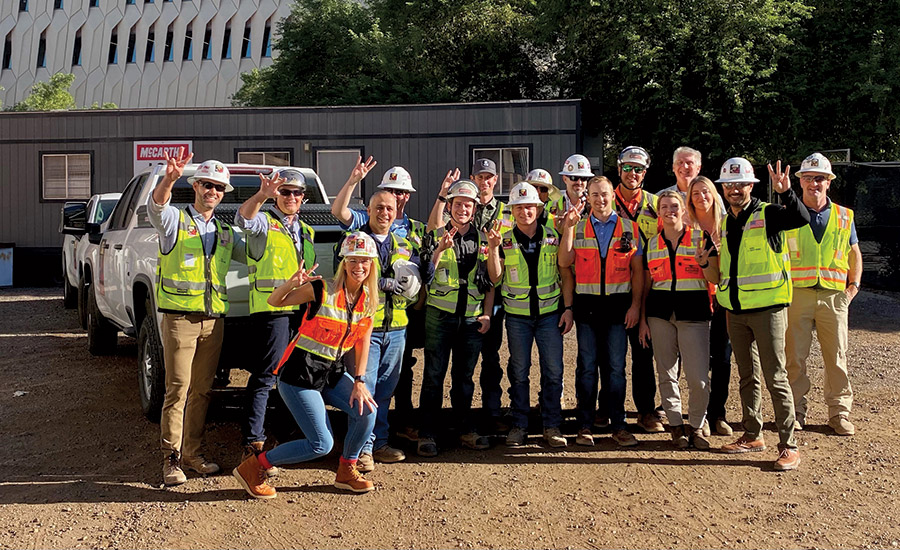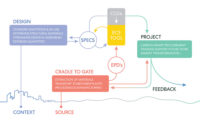Related Article:
Pulling All Stops to Meet Client Sustainability Goals
Back to:
25 Top Newsmakers
During his final 20 months in the U.S. Navy, Carlos Diaz was part of a team deconstructing a nuclear aircraft carrier for refurbishment. The experience made him want to be a designer.
“I wore a hard hat every day,” says Diaz, a project director for McCarthy Building Cos. Sixteen years after his discharge in 2007, he still has the hat in his closet.
His stint in the Navy—which included time on an aircraft carrier in the Persian Gulf during the Iraq War—inspired Diaz to pursue a career in construction. But that was not the most significant impact of his military experience.
During his four years of service, he learned mental toughness and stability, and perhaps more significantly, group dynamics—absent from his life growing up in Phoenix as an only child. Diaz also learned about goal-oriented teamwork. And he saw that people are resilient and adaptable—especially when united in purpose.
“The military gave me my first look into human dynamics,” says Diaz, who adds that he also learned that people and passion are both important ingredients to complete a task at hand.
Diaz’s military experience has come in handy during his jobs—first for Schuff Steel Co. and especially for McCarthy, where he has worked for eight years. Diaz worked full time for Schuff during his tenure at Arizona State University (ASU), which is why it took him six years to graduate. There, he switched from engineering to construction management.
At McCarthy, he brought his Navy skills to bear on construction of the $192-million Rob & Melani Walton Center for Planetary Health at ASU, Tempe—the school’s showpiece.
The entire building team for ENR Southwest’s Project of the Year overcame myriad design and construction challenges, including having to find ways, early in design, to reduce the embodied carbon of the concrete structure to meet ASU’s ambitious sustainability goals. But McCarthy, which self-performed the concrete, took on the greatest risk by agreeing to implement an unusual flat-plate deck technology, called a voided biaxial slab system, for roughly 50% of the floors.
The system, which reduces concrete volume through plastic bubble-like forms in the deck, is rarely used in the U.S. and had never been used in Arizona. It also added several steps to the work and was unfamiliar to the crew. But the strategy not only helped meet ASU’s carbon goals, it created an example for other building teams seeking to cast greener concrete.
Initially, McCarthy was skeptical about the voided slab strategy. But instead of rejecting it, the Diaz team thoroughly researched it, during preconstruction. The contractor then decided to dare to be different, satisfied it could deliver the system without adding time or cost. McCarthy completed the building in December 2021, on budget and slightly early.
“You need people willing to go on the journey, who are not afraid of the application,” says Stephen Curtis, the principal at the project’s structural engineer, Buro Happold, who suggested the voided slabs. “Carlos and others at McCarthy led with a spirit of camaraderie.”
Eric Johnson, project architect for Grimshaw, co-lead design firm with Architekton, adds, “Carlos is a great communicator” and collaborator. “His team came to the table with smiling faces and a can-do attitude,” he says.
Diaz credits his colleagues for the job’s success. “I would take the ASU team and build any project, anywhere,” he says.
McCarthy has not used the voided slab system since the ASU project, though it was evaluating it for a job now on hold. But sounding just like the Navy veteran he is, Diaz says, “We are ready, willing and able to deploy it anywhere.”






Post a comment to this article
Report Abusive Comment